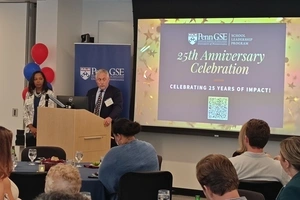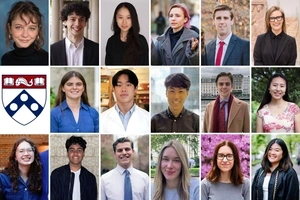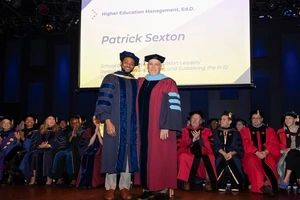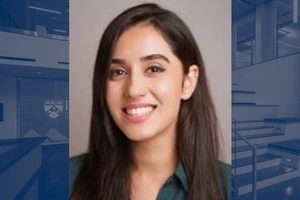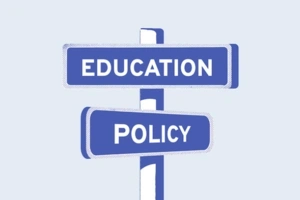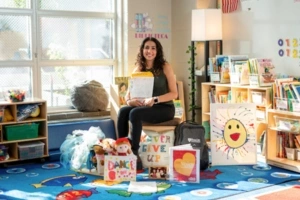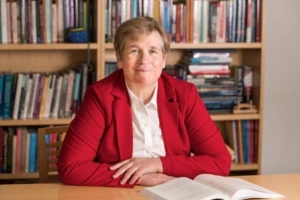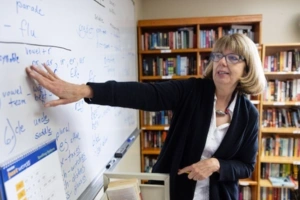Interview by Juliana Rosati
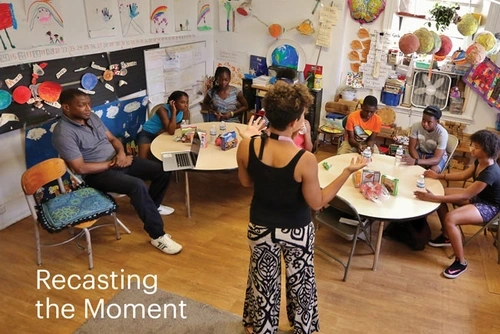
In the wake of the series of police killings of Black people that sparked historic protests and heightened national conversation about race, and amid persistent structures of systemic racism, how can people of color promote their own emotional well-being and healing? How can leaders and organizations create lasting change to advance anti-racism and social justice? To Penn GSE’s Dr. Howard Stevenson, Constance Clayton Professor of Urban Education and professor of Africana studies, the importance of skills and practice to navigate difficult interpersonal moments cannot be overestimated. A nationally sought expert on racial stress and racial trauma, Dr. Stevenson trains students and educators in racial literacy—the ability to identify and resolve racially stressful social interactions. Since 2016, he has brought his approach to students, educators, parents, community leaders, and others through the Racial Empowerment Collaborative at Penn GSE, of which he is executive director. More than one hundred public and independent schools and community health organizations across the country have sought the expertise of Stevenson and his team. We sat down with him to discuss the national landscape and how racial literacy can help create a better future.
In light of the deaths of George Floyd, Breonna Taylor, Ahmaud Arbery, and other Black Americans killed by police, and the historic protests that followed, how would you describe the current landscape of our country?
As in other times of injustice followed by protests, there has been a sense that people feel very hopeful. And I think part of that comes from watching more people, or different people, joining in protest than we generally see. But if you look back across history, you will see a dynamic in which protest is accompanied by violent backlash. Some of this is documented in the work of my brother, Bryan Stevenson, at the Equal Justice Initiative, which recently chronicled over two thousand lynchings in the United States between 1865 and 1876, during Reconstruction. It’s outrageous—at the time of hope, at the time of the country deciding to make a change, you have this other narrative and experience of extreme violence. Right now, I think the real issue is how to organize change. People can get excited in what civil rights leader Kwame Ture called “spontaneity moments,” but do we know how to create change? I believe we don’t yet have skill sets or literacies that are as far-reaching as these protests.
How can the approaches of racial literacy help?
Racial literacy offers an interpersonal approach to making change. We need institutional, systemic approaches as well as interpersonal approaches. And when it comes to the interpersonal, change is not easy if you don’t have a stress management approach. In the moment, what do I do when I’m not just upset by watching George Floyd’s murder on video, but when I’m facing somebody different from me and I have to use my own wits and battle my own stereotypes and fears? There’s no research to suggest that even if I believe in social justice, or I believe racism is wrong, that I will act without a sense of threat in a racial encounter. We think of racial literacy as the ability to read a racially stressful moment accurately, to recast it from really high stress to moderate or low stress, and then to work to resolve it by making a healthy decision that isn’t an underreaction or an overreaction.
How do you define a racial encounter?
It’s really in the eye of the person involved. The conflict could be internal—you could be struggling with thoughts of what might happen in the presence of a person different from yourself. Or you could feel that you have been slighted or insulted because of your difference.
What are the racial literacy skills that the Racial Empowerment Collaborative teaches for dealing with these moments?
One particular recasting skill is CLCBE: Calculate, Locate, Communicate, Breathe, and Exhale. On a scale of one to ten, can you calculate your stress level? If it’s an 8, 9, or 10, you’re in a threat-like position, and you’re compromised. Usually your brain goes on lockdown and you lose peripheral vision and hearing. This is how we would describe many of those police officers who simply made no decision before shooting someone who was unarmed. I believe we can teach people to notice their level of stress. If you notice it, then you have options that you wouldn’t otherwise. Locate means, where do you feel the stress in your body? Communicate means, identify what you are saying to yourself during the moment. The process takes practice, but we have taught children as young as fifth graders. One time I was at a school in Chicago with about seventy fifth graders early in the morning. Before I could get to “communicate,” one of the girls stood up and said, “I’m angry at a 9 that I’m the only Native American girl in this school. I can feel it, I can locate it in my stomach. It’s like a bunch of butterflies fighting with each other so much they fly up into my throat and choke me.” She was so descriptive.
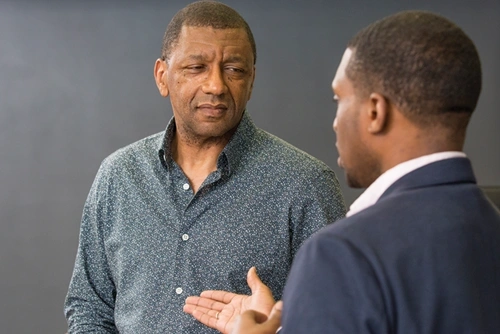
What happens at the end of this process to resolve the moment?
Breathing in for four counts and exhaling for six counts is meant to bring a certain mindfulness, so that you can pause and decide how to respond. We work with students of color to practice what we call “healthy racial comeback lines” that they might choose to say at this point. Experiences of discrimination are associated with chronic stress, which comes partly from not knowing what to say in the moment. The comeback could be as simple as saying “Excuse me?” with attitude in response to an insult. The purpose is to empower young people with a way to stand up for themselves. Whether they say it to the other or not, it’s most important they say to themselves, “I reject your rejection of me.” With teachers and others in positions of authority, we focus on developing racial mindfulness so that they are aware of how they behave in the presence of people different from themselves and are prepared to make decisions that foster equity.
How have you adapted this process for different contexts?
We’ve brought it to schools to help educators and students navigate conflicts between students, or between students and teachers. We’ve worked with parents and children to
help families have conversations about race. Parents learn to use the skills to process their own childhood traumas before speaking with their children, and the children learn the
skills as well. Another project, PLAAY (Preventing Long-term Anger and Aggression in Youth), helps young people to manage stress, including but not limited to racial stress. We use physical activity, primarily basketball, as a stress management technique, along with group therapy and racial literacy. For that project I’ve been traveling to New Mexico for the past eight years and training communities from around the country, thanks to support from the National Network to Eliminate Disparities in Behavioral Health. Stakeholders from departments of recreation, police departments, mayors’ offices, and education get trained to take the approach back to their cities.
"With teachers and others in positions of authority, we focus on developing racial mindfulness so that they are aware of how they behave in the presence of people different from themselves and are prepared to make decisions that foster equity.”
How has your work translated to a virtual environment?
There have been some pleasant surprises. In our work, we usually push people to tell stories about racial encounters they have experienced. With online interactions, we’ve discovered that people can manage stress during our process in ways that may not be as available face-to-face. You could go to a room that’s calming for you, hold a pet, or find privacy by stepping away from the screen. It’s an interesting difference that we’re still learning about. I’ve found that in the virtual environment, you can push people to emote in a way that I wouldn’t have thought possible without being face-to-face. And yet I also want to be there when we push you, because there’s a level of trust that’s harder to develop virtually.
In June, you led two School-wide meetings of Penn GSE faculty, staff, and students to respond as a community to the racial climate of the country and envision next steps in the School’s goals for race, equity, and inclusion. What do you feel that those meetings accomplished?
We had over a hundred participants, and I felt that people invested themselves in the conversations. It was nice to have faculty, staff, and students leading together—we had a variety of folks who shared their voices. I think there was a common sense of energy to want to do something. The faculty members who are now leading various committees to expand Penn GSE’s initiatives in race, equity, and inclusion are continuing that energy.
What gives you hope about the future?
When we teach racial literacy to young people, it’s exciting to see how they take it in directions we didn’t always plan. In one school, students started pushing their teachers and peers in a way that led to them being part of a rally that took place recently at Philadelphia’s City Hall. Young people can move the rest of us. If they get the skills to speak up, they use their voices like a superpower, and what they do with it extends beyond our imagination.
Putting People at the Forefront of Research
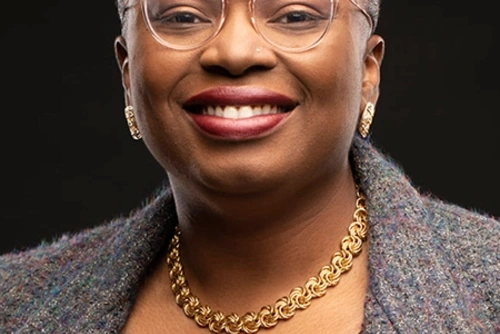
Stevenson’s team at the Racial Empowerment Collaborative (REC) includes two post-doctoral fellows in Penn GSE’s Human Development and Quantitative Methods division. In keeping with the Collaborative’s mission, their research seeks to advance the well-being of students and educators by addressing issues of race.
Dr. Nkemka Anyiwo, a vice provost and National Science Foundation postdoctoral fellow, studies how Black youth heal from and are empowered to contest racism by advocating for change in their communities. “How do we support young people in developing the skills, the confidence, not only to survive and manage the system, but also to contest and challenge it?” asks Anyiwo, who earned her M.S.W. and Ph.D. at the University of Michigan, Ann Arbor, and has led several cultural and social justice organizations and worked as a community and campus organizer.
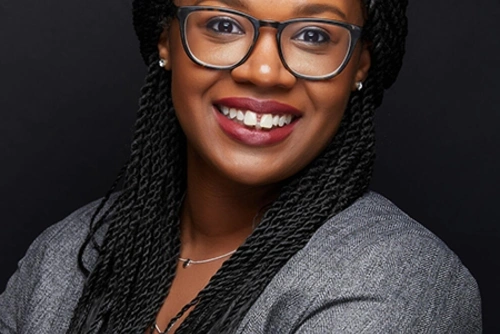
Penn GSE alumna Dr. Whitney Polk, GED’11, GED’12, a National Science Foundation postdoctoral fellow, is taking a closer look at how racial literacy can be applied to school discipline. “That moment when a teacher decides that a young person has violated the code of conduct can become a racially stressful interaction, one that feeds into the larger racial climate of the school,” says Polk, who worked for agencies contracted with The School District of Philadelphia as a licensed professional counselor before earning her Ph.D. at Harvard. “I’m trying to understand the stress experienced by both the educator and the young person, and give them the skills to reclaim their humanity in those moments.”
Anyiwo and Polk both appreciate the emphasis that Stevenson and REC place on people and community. Polk, who worked with Stevenson while earning her master’s, returned to Penn GSE to work with him again. “He puts forth racial literacy as something that can be learned and practiced in community with others,” she says. Anyiwo adds, “Our team is supportive of each other and very intentional about how this work translates to people— keeping them at the forefront of the work. Dr. Stevenson embodies this in his leadership, and his care and dedication are powerful.”
Past postdoctoral fellow and Penn GSE alumna Kelsey Jones, GR’15, now assistant professor of human development at California State University, San Marcos, agrees. “His ability to connect with people in a very authentic way is something that spreads through the work of the Collaborative,” Dr. Jones says. “He is a man about healing. And all of the work of REC is focused on healing.”
This article appeared in the Fall 2020 issue of The Penn GSE Magazine.
